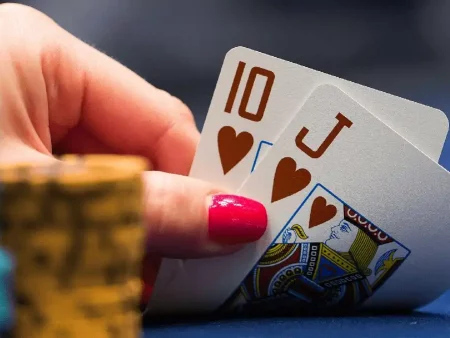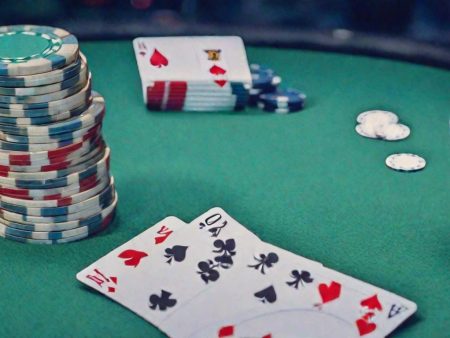In the strategic aspect of poker, the ante plays a significant role — a mandatory bet placed by all participants before the start of a hand. Typically, its size ranges from 10% to 25% of the big blind. This dynamic element of the game adds complexity and requires careful analysis, as it directly influences each player’s strategy.
The ante can be seen as a test of aggression and decisiveness. Instead of passively waiting for perfect starting hands, players are compelled to actively engage in the game to maintain initiative and chips. Alongside bonuses, promotions, prizes, and online casino tournaments, this element introduces an additional layer of psychological competition and strategic planning. The ante forces participants to evaluate each hand, card, and table position more attentively, creating a dynamic environment where unexpected moves and decisions can become the key to success.
Where the Ante Is Used
In popular poker variants like Texas Hold’em and Omaha, the use of the ante is not always mandatory. At cash tables featured in online casino rankings, this element is often employed to increase the game’s pace and participants’ interest. It is particularly common in Hold’em, whereas in Omaha, the ante is less frequently used due to the already high level of player activity.
Rules regarding the ante are usually specified in table comments in poker rooms. This allows participants to familiarize themselves with the current betting structure in advance and prepare for more informed and strategic gameplay. In five-card poker variants such as Draw and its variations, the ante may also be part of cash games. The term, borrowed from the English language, where “ante” means “before,” gives the game process a certain order.
Read also: Table and style in poker.
Ante in Seven-Card Games
Seven-card games such as Stud, Razz, and Stud Hi-Lo always involve the use of an ante in every hand. However, the betting structure in these games differs significantly. Each player is required to place a mandatory bet, after which the participant with the lowest face-up card initiates the betting by making a bring-in. Declining this action is not an option, and the size of the bring-in is usually much smaller than the blinds. The conditions and betting rules depend on the game format — cash or tournament.
Cash Games
In cash games, the introduction of the ante means that every participant must contribute their share before the hand begins. This has strategic importance, as the pot significantly increases in the early stages, encouraging active participation in betting. For example, at a 6-max table with blinds of $1/$2/$0.2, the total pot before the hand begins will be $1 + $2 + ($0.2 × 6) = $4.2.
Tournaments
In tournaments, the betting scenario changes depending on the stage of the game. In the early and middle levels, participants place only the small and big blinds. However, as the late registration phase ends and players enter the prize zone, an additional bet is introduced in each hand. This ante increases alongside the blinds and remains until the tournament’s conclusion.
Where to Find Information
To better understand table or tournament rules, it is recommended to review the information before starting the game. In cash games, this can be done by examining the table’s info card, and in tournaments, by studying the betting structure in the lobby.
Ante Size and Calculation Rules
The ante in poker is an integral part of strategy and tactics in the most popular poker variants, such as Hold’em, Omaha, and Draw. On average, the ante size ranges from 10% to 25% of the big blind (BB) and depends on the specific rules of cash tables or tournament blinds.
In online poker, the ante amount is automatically deducted from players’ stacks before the cards are dealt. In offline games, each player manually contributes this mandatory bet. Refusing to participate in the ante excludes a player from the hand. The difference between the ante and blinds lies not only in size but also in placement rules. Usually, the ante is significantly smaller than the BB; however, every player participating in the hand must make this bet, adding an extra level of dynamism to the game.
Impact of the Ante on Gameplay
The ante’s influence on players’ strategy and tactics cannot be overstated. Additional pre-flop bets increase the total pot, encouraging active interaction among participants. This also opens up additional opportunities for successful betting and competing for better odds.
In tournaments, the use of the ante in later stages helps maintain the game’s tempo and prevents slowdowns. As players approach the prize zone or are already in it, mandatory bets motivate them to grow their stacks at the right moment, adding strategic depth to the game.
Features of the “M Factor”
The increase in pot sizes significantly impacts the logic and tactics of the game, altering the course of events. This factor also affects the concept of the “M Factor,” which determines the number of rounds a player can survive at the table without risking elimination. Experienced tournament participants consider not only the size of the bets but also their timing and relation to the average stack size. Such analysis allows for more informed decisions in various game scenarios.
Players with short stacks due to a low M value are forced to fold questionable hands. In such circumstances, the optimal strategy is active participation in betting with decisive actions, such as folding or going all-in on the pre-flop.
Read also: Table and style in poker.
Features of Cash Games
In cash games, the mandatory buy-in system adds dynamism: participants become more involved in betting, leading to an increase in the average pot size in each hand. Unlike tournaments, many poker players maintain full stacks, which changes the strategy, affecting pot odds and providing opportunities to use a wider range of starting hands with suitable pre-flop odds.
The situation on the flop and turn becomes more complex as pots increase compared to regular games with only small and big blinds. In this context, adjusting bet sizes is essential, taking into account the potential for successful bluffs and large bets. Beginners are advised to choose tables where mandatory bets are not required frequently. This allows for more cautious play, selecting strong starting hands and avoiding mistakes in large pots. Experienced players seeking additional earnings at tables or in tournaments with an ante should ensure their strategy is adapted to changes in pot sizes. In conclusion, if you’re looking for a casino with a deposit starting from 5 USD, follow the link. Learn more about the gambling industry in our blog. Want to use math to increase your wins? Read the mathematical casino strategies blog and apply precise calculations in your bets!
FAQ: The concept of ante in poker, its influence on the game strategy
What is an ante in poker?
An ante is a mandatory bet placed by each player before a hand begins. Unlike the blinds, which are posted only by two players, all players must contribute an ante, which helps to build the pot from the start. This dynamic element adds a layer of strategy, encouraging players to engage more actively in the game.
How does the ante influence poker strategy?
The ante forces players to act more aggressively, as they have already committed a portion of their stack to the pot. This results in larger pots early on and requires players to carefully assess their hands and positions, making the game more dynamic and competitive.
What is the difference between an ante and blinds in poker?
Blinds are forced bets posted by two players, the small blind and the big blind, to start the action in a hand. The ante, however, is a smaller bet placed by every player at the table before the hand begins. The ante often appears in games like Seven-Card Stud or in tournament formats, where it increases the overall pot and encourages more participation.
When is an ante used in poker?
Ante is typically used in poker games like Seven-Card Stud, Omaha, and in tournament play. It is more commonly found in cash games and tournament structures, adding to the pot before the cards are dealt, particularly in the later stages of a tournament.
How do ante bets affect tournament play?
In tournaments, the ante becomes significant in the later stages to keep the game moving and increase the pressure on players. As blinds increase, the ante helps to maintain the pace and ensures players remain active, preventing slowdowns in the action.
What are the advantages of using an ante in poker?
The ante creates larger pots early in the game, promoting action and encouraging players to make more strategic decisions. It also reduces the tendency to wait passively for good hands and adds an additional psychological layer to the game.
What strategies should I consider when playing with an ante?
When playing with an ante, players should adjust their strategy by becoming more active in the early stages of the hand. It's crucial to play aggressively, as the ante boosts the pot size, and avoid playing too cautiously, as this can lead to losing out on valuable opportunities.






